When it comes to day trading, you might wonder which momentum indicators are truly the most effective for guiding your decisions in a fast-paced market.
However, understanding and utilizing the right indicators can be the key to unlocking profitable opportunities in your trades.
By exploring the top seven momentum indicators tailored for day traders, you'll gain valuable insights into market trends and potential entry and exit points that could significantly impact your trading success.
Relative Strength Index (RSI)
The Relative Strength Index (RSI) stands as a pivotal tool for day traders seeking to gauge market momentum effectively. By analyzing recent price changes, RSI provides insights into whether a security is overbought or oversold, helping traders anticipate potential trend reversals. RSI values, ranging from 0 to 100, offer clear signals: readings above 70 signal overbought conditions, while those below 30 indicate oversold levels.
This indicator enables traders to confirm the strength of an ongoing trend or identify potential entry and exit points. Moreover, divergence between price movements and RSI can generate valuable buy or sell signals, guiding traders in making informed decisions. Understanding RSI is crucial for day traders looking to navigate the complexities of the market with precision.
Average Directional Index (ADX)
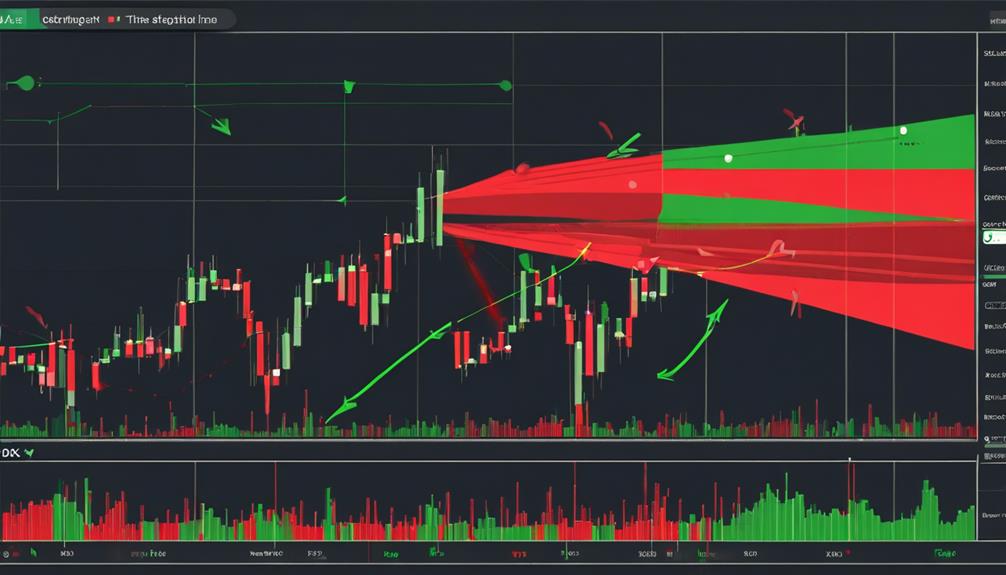
Pivoting from the Relative Strength Index (RSI), day traders can now analyze market momentum using the Average Directional Index (ADX), a technical indicator that measures trend strength regardless of direction.
When considering the ADX in your trading strategy, keep these key points in mind:
- ADX ranges from 0 to 100, with levels above 25 indicating a strong trend.
- ADX helps identify trending market conditions, presenting potential trading opportunities.
- A rising ADX signifies a strengthening trend, while a falling ADX suggests a weakening trend.
Commodity Channel Index (CCI)
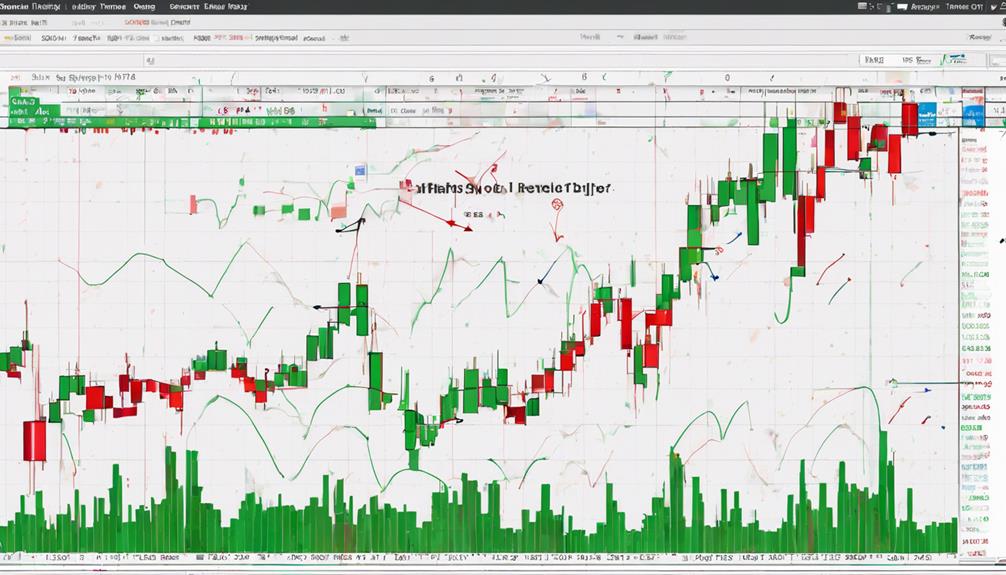
Analyzing market momentum through the Commodity Channel Index (CCI) provides day traders with a valuable tool for identifying overbought or oversold conditions in securities. Developed by Donald Lambert in 1980 to detect cyclical trends, the CCI indicates overbought situations with readings above +100 and oversold conditions with readings below -100.
Day traders leverage the CCI to pinpoint potential trend changes, as extreme CCI values often precede price reversals. Particularly favored in volatile markets, the CCI excels in offering early entry and exit signals.
Moving Average Convergence Divergence (MACD)
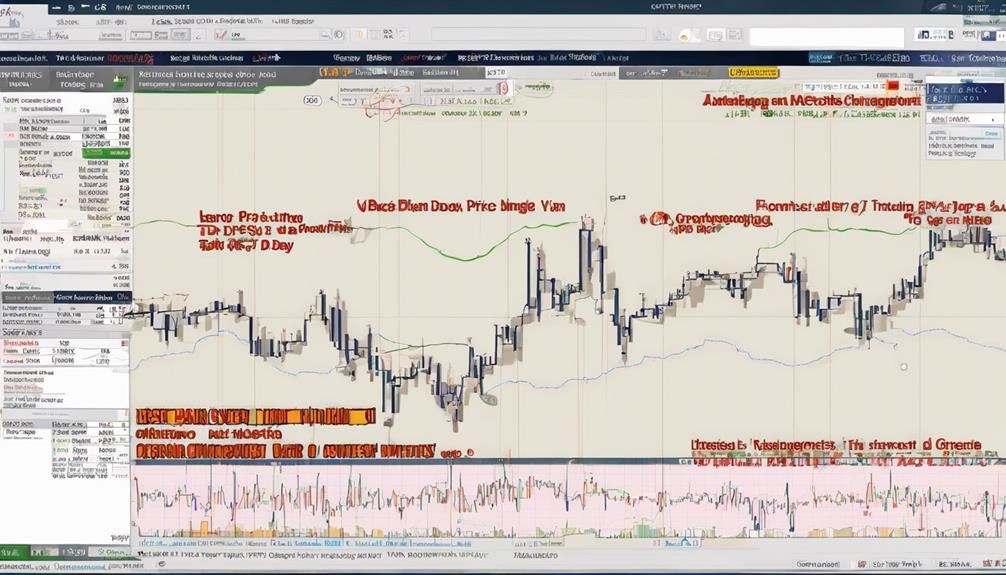
To seamlessly move from analyzing overbought or oversold conditions with the Commodity Channel Index (CCI) to exploring another valuable momentum indicator, consider the Moving Average Convergence Divergence (MACD).
MACD is a popular momentum indicator that helps traders identify potential trend changes by analyzing the relationship between two moving averages.
Look for bullish signals when the MACD line crosses above the Signal Line, indicating a potential upward momentum.
The histogram on the MACD indicator provides visual insights into the difference between the MACD line and the Signal Line, highlighting peaks, troughs, and divergences that can signal potential reversals in price movements.
Momentum Indicator
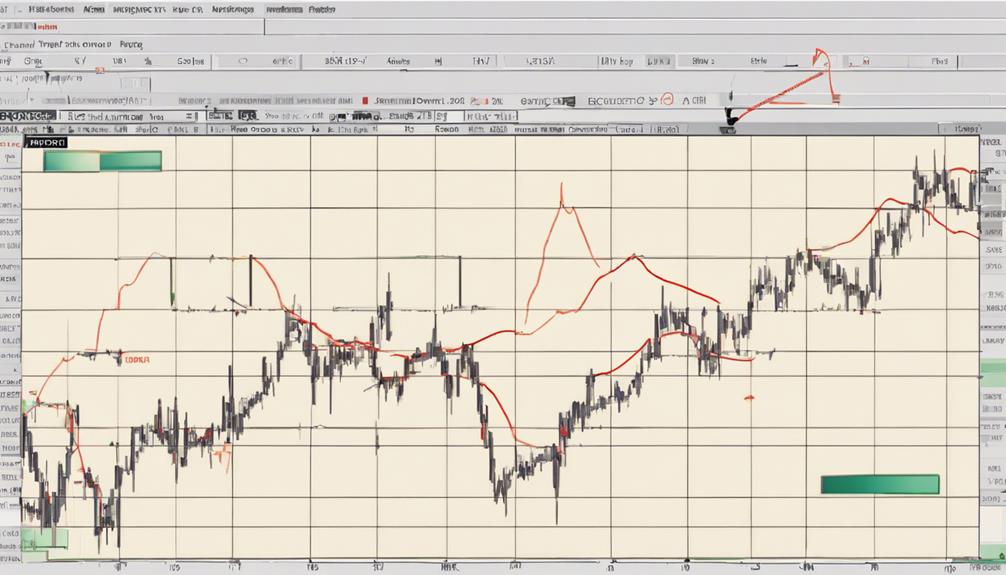
Momentum indicators play a crucial role in evaluating the speed and strength of price movements within the market, aiding traders in identifying potential trend reversals. Traders utilize indicators like the Relative Strength Index (RSI) and Moving Average Convergence Divergence (MACD) to gauge market momentum.
These technical analysis tools help traders identify overbought and oversold conditions, signaling potential shifts in the market. By incorporating momentum indicators into their strategies, traders can make more informed decisions when entering or exiting positions.
Understanding price movements through these indicators is essential for successful momentum trading. Utilizing these tools effectively can provide day traders with valuable insights to optimize their trading decisions and manage risk efficiently.
Rate of Change
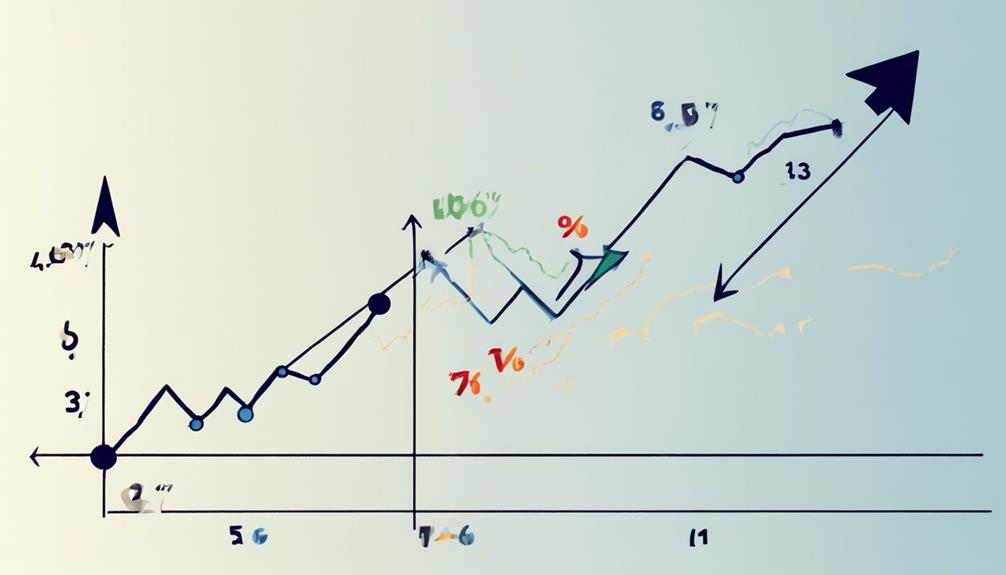
Traders can leverage the Rate of Change (ROC) to assess the speed and direction of price changes, enhancing their ability to identify potential trading opportunities based on momentum.
Key Points:
- ROC provides a positive ratio for high momentum and a negative ratio for low momentum.
- Positive ROC values indicate increasing momentum, while negative values suggest decreasing momentum.
- Day traders use ROC to gauge the rate of price changes and spot potential trading opportunities efficiently.
Stochastic Oscillator
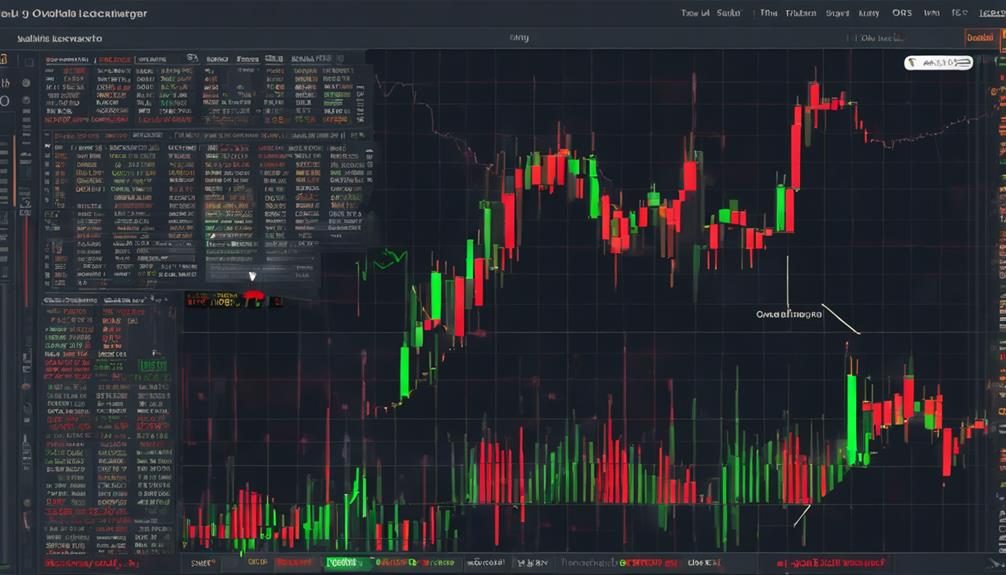
Utilizing the Stochastic Oscillator allows for the assessment of price movements' speed and momentum, aiding day traders in pinpointing potential trend reversals efficiently. By comparing the current closing price to the price range over a set period, this indicator offers insights into market conditions.
It generates overbought and oversold signals, with readings above 80 and below 20, respectively, signaling potential reversal points. Day traders often rely on the Stochastic Oscillator to gauge the speed and momentum of price changes, helping them make informed decisions on entry and exit points.
Its popularity stems from its ability to highlight critical price levels and assist traders in navigating market trends effectively.
How Do Momentum Indicators Differ in Day Trading vs. Swing Trading?
In day trading, momentum indicators help identify short-term price movements, requiring quick decisions. In swing trading, momentum indicators have a longer outlook, giving traders time to assess price trends and make informed decisions. Understanding the role of momentum indicators in swing trading is crucial for maximizing profit potential.
Frequently Asked Questions
What Is the Best Momentum Indicator in Day Trading?
In day trading, the best momentum indicator varies based on your strategy and preferences. Experiment with indicators like RSI, MACD, and ADX to find what works best for you. Combining indicators can offer comprehensive signals.
What Is the Most Effective Indicator for Day Trading?
In day trading, the most effective indicator is subjective based on your strategy and preferences. Consider factors like your trading style, risk tolerance, and market conditions to determine the best indicator for your needs.
What Is the Mom of the Momentum Indicator?
Understand the Mom of the Momentum Indicator as the gauge for trend strength in price movements. Higher values signify robust momentum, lower values indicate weaker trends. Day traders rely on Mom to decide trade entries and exits.
What Are the Three Momentum Indicators?
Three key momentum indicators are Relative Strength Index (RSI), Moving Average Convergence Divergence (MACD), and Average Directional Index (ADX). RSI gauges price speed and change, MACD shows trend direction, and ADX measures trend strength for informed trading decisions.
Conclusion
Congratulations! You've now mastered the top seven momentum indicators for day trading. Remember, in the fast-paced world of day trading, staying ahead of the curve is key.
Keep a close eye on these indicators to navigate the market with precision and confidence.
Just like a skilled conductor leading an orchestra, use these tools to orchestrate your trades and ride the waves of momentum to success.
Happy trading!
